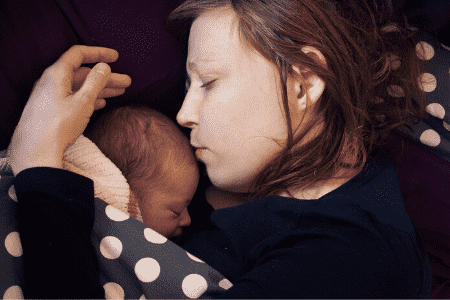I started a private school for my daughters when the California reading curriculum implemented the “Whole Language” approach and stopped teaching phonics in 1994. I worried that as the pendulum swung to the extreme left, we would have a generation of students with reading and spelling problems – something I didn’t want for my girls.
I tried to understand the “Reading Wars” and researched the benefits of each approach.
The Whole Language method teaches children to read by recognizing a group of letters as an entire word. They don’t learn that individual letters make different sounds. Instead, young students memorize these sight words and put the words together in a sentence using context clues to understand the general meaning of the sentence.
The Phonics-Based method teaches children the sounds that each alphabet makes so they can string the sounds together to make new words. The students learn spelling rules so they can decode words. Next they learn blends and digraphs (ch, gl, st, fr, etc) to expand their vocabulary.
I found that teaching reading in the English language was difficult and frustrating because English doesn’t consist of just phonemes or sight words. How can a young reader sound out “fight”? It’s not phonetic. But then how can a child tell the difference between “through” and “though” when they look similar and they haven’t learned phonograms (ight, ough, tion, etc.)?
I couldn’t believe that there was just one way to teach children to read. After consulting with reading specialists, I designed a curriculum that gave students all the tools they would need to read. It included phonics, phonograms, sight words and whole language — in this order.
Starting at age 2, we taught phonemes (individual speech sounds). There are 44 phonemes in the English language. The students learned all of the sounds that each alphabet makes (A= ah, ay, uh; S=s, z). This gives the child basic rules to begin to see how words are simply a string of letter sounds. They enjoyed reading C-A-T and making that successful connection between the spoken and written word.
Next, we taught phonograms (fixed combinations of letters that make one or more sounds). There are 49 multi-letter phonograms. By learning phonograms, students use these tools to read much more than the basic consonant-vowel-consonant words. Children can sound out words using phonemes and phonograms: S-IGHT. By encouraging students to make lists of words with the phonogram of the week, they learned that the “ite” sound can be spelled either “ITE” or “IGHT.” Students who learn phonograms are better spellers than those who memorize groups of letters in sight words.
While students master phonemes and phonograms, we also introduced sight words. Certain words are just too difficult to sound out – even with phonograms – so we introduce certain words that they simply need to memorize. Words like “the” or “what” need to be memorized and recognized by sight.
Students begin to apply their knowledge of phonemes, phonograms, and sight words as they read, and then they use context clues to increase their comprehension and fluency. That’s where we incorporate the Whole Language approach to reading. I also found that having children write words, and then sentences, paragraphs and stories, reinforced their reading skills. As we read classics to children, we pointed to the words to build their sight vocabulary.
By giving students the tools to divide words into sound bites and to memorize words that are rule breakers, they can become confident readers. Both of my daughters learned to read at age 3 and started writing 2-3 page stories at age 4. Introducing a variety of reading instruction strategies ensures that all children can find their way to reading that works for them.
Although most schools in Santa Cruz have adopted a hybrid approach that includes an eclectic way to teaching reading, these “Reading Wars” continue in many places across the United States.
Susan Tatsui-D’Arcy is the founder of Merit Academy (one-on-one classes)and Merit Educational Consultants (college and educational advisory). She has written books on projects, free child care, education, and parenting. Susan hosts TEDxMeritAcademy for students to present their innovative projects and solutions. In 2019, she was California Mother of the Year. meritworld.com








